1. Coca-Cola Bottle
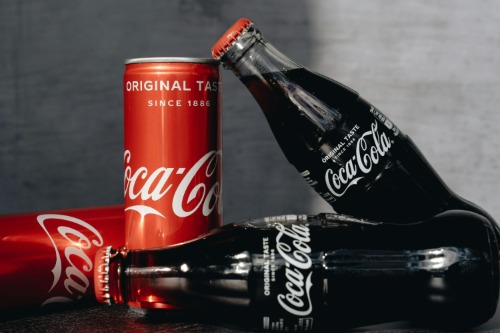
The contour Coke bottle is instantly recognizable worldwide, yet it wasn’t designed to scream “American icon.” Its unique shape came about in 1915 to distinguish the soda from competitors and prevent knock-offs. Designers wanted something so distinct that people could recognize it in the dark or if it broke. They ended up creating a shape that’s both elegant and instantly familiar, completely by accident.
Over time, the bottle became more than just packaging—it became a symbol of American lifestyle and consumer culture. Advertisements leaned into its curvy form, reinforcing its identity beyond the beverage itself. Tourists and collectors began snapping up Coke memorabilia, spreading the iconography globally. Today, the bottle is as much a design legend as a soft drink container.
2. Levi’s Jeans
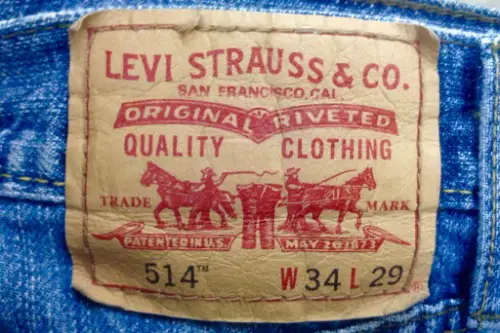
Levi’s 501 jeans were originally workwear for miners and laborers during the Gold Rush, not a fashion statement. They were built to be durable and practical, using rivets to withstand hard labor. Nobody imagined they would become a symbol of rebellion and American casual style. Their rise to cultural icon status happened more through adoption than intention.
Hollywood helped cement the image, dressing actors like James Dean and Marilyn Monroe in denim to evoke youthful defiance. Over decades, the jeans came to represent freedom, ruggedness, and the American frontier spirit. From cowboy to punk rocker, Levi’s became a canvas for self-expression. What started as workwear became a global emblem of Americana.
3. Baseball Cap

The baseball cap was initially designed to shield players’ eyes from the sun, not to define a national identity. Its functionality made it ubiquitous on fields, but it didn’t start as a fashion or cultural statement. Over time, fans and teams adopted it as part of their identity, giving rise to the merchandising phenomenon we know today. Before long, the cap became a casual accessory across the country.
It began appearing in movies, music videos, and even political campaigns, becoming a subtle yet powerful signifier of “American.” It’s one of those items where its everyday use gave it symbolic weight. Wearing a cap could say “sports fan,” “rebel,” or “patriot,” depending on the logo. Its unassuming practicality paved the way for cultural resonance.
4. Hot Dog

The hot dog’s origins are German, yet it has become inseparable from American identity. Vendors popularized it at baseball games and fairs, turning a simple sausage-in-a-bun into a national pastime. The simplicity and portability of a hot dog made it perfect for large crowds and informal gatherings. No one planned for it to become a symbol of Americana—it just happened naturally.
Hot dogs now evoke summertime, stadiums, and family cookouts across the country. They’re featured in competitive eating contests, quirky state fairs, and holiday celebrations. The connection between food and identity stuck because it was convenient, affordable, and fun. Every bite carries a little nostalgia for Americans of every generation.
5. Route 66 Sign
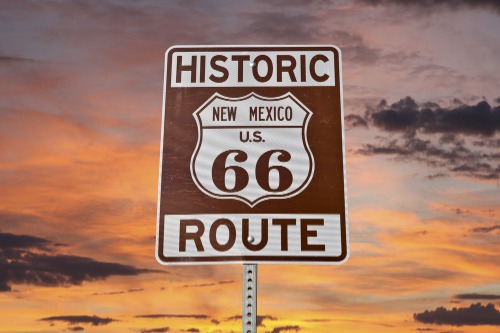
Route 66 started as a practical highway connecting Chicago to Los Angeles, not a cultural icon. Its fame grew gradually as it represented mobility, freedom, and the open road during the 20th century. Travelers began documenting the quirky roadside attractions and diners along its path. Before long, the road symbolized opportunity, adventure, and the spirit of Americana.
The iconic shield-shaped sign became a photo-worthy emblem of mid-century road trips. Songs, movies, and tourism campaigns helped cement its legendary status. People started chasing “Route 66 experiences,” turning an ordinary highway into a cultural pilgrimage. Its symbolism grew far beyond the asphalt it marked.
6. Apple Pie
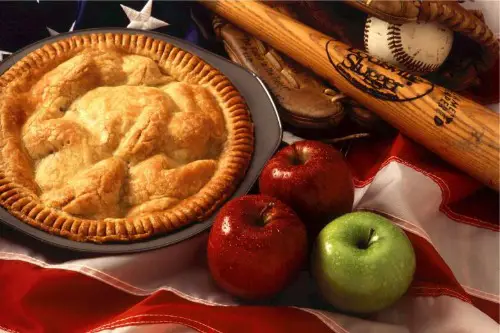
Apple pie was never invented in the U.S., but Americans embraced it as a culinary standard. By the 19th century, recipes for apple pie had become widespread, thanks to immigrant influences and home baking culture. Its association with prosperity, domesticity, and wholesome family life cemented its role in American identity. Saying “as American as apple pie” was more an organic evolution than a marketing ploy.
During wartime and economic hardship, apple pie symbolized resilience and familiarity. It appeared in cookbooks, school lunches, and advertisements, quietly reinforcing its “All-American” image. Even as recipes evolved, the symbolic value remained intact. Today, apple pie is more about nostalgia than novelty, linking generations of Americans through a simple dessert.
7. Cheerios
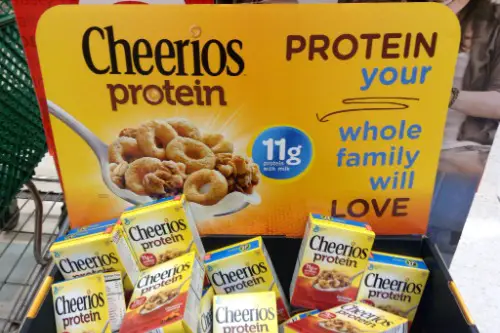
Cheerios started as a health-focused cereal in the 1940s and were never meant to be an American symbol. Their circular shape and oat base were designed to appeal to health-conscious consumers and children. Over decades, they became a breakfast staple, bridging households of all backgrounds. The brand unintentionally embedded itself in daily American routines.
Cheerios now symbolize comfort, family, and even childhood memories for many. Its ubiquity in pantries made it a quiet yet powerful cultural touchstone. Advertising reinforced wholesome, all-American values without ever claiming to define a nation. What began as a practical food product became part of the American morning ritual.
8. Vinyl Records

Vinyl records were originally just the medium for music distribution, not a cultural statement. In the mid-20th century, their popularity skyrocketed alongside jazz, rock ‘n’ roll, and pop music. Owning records, spinning them at home, and collecting albums became a form of social identity. The physicality of vinyl unintentionally made it a cultural artifact.
It became a symbol of nostalgia, authenticity, and rebellion against disposable culture. Music fans and collectors helped cement the icon status, keeping vinyl relevant even during the digital age. Vinyl’s comeback reflects Americans’ attachment to history and tactile experiences. Today, it’s as much a lifestyle choice as a way to listen to music.
9. White Pick-Up Truck
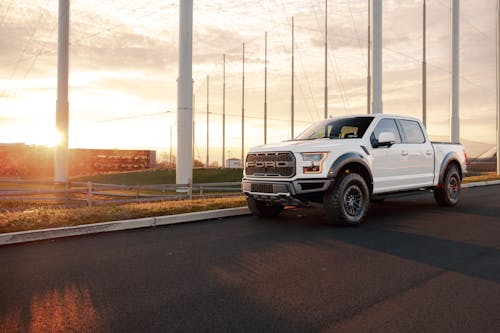
The white pick-up truck began purely as a utility vehicle, favored by farmers and small businesses. Its straightforward design emphasized practicality over style. Slowly, it became associated with hardworking, self-reliant Americans across rural and suburban landscapes. The symbolism grew organically through repeated cultural exposure.
Movies, advertising, and lifestyle imagery helped solidify the truck as an icon of rugged Americana. Driving a pick-up came to represent independence and practicality. It’s now used to signal blue-collar pride and a connection to the land. A functional vehicle accidentally turned into a national identity marker.
10. Mason Jar

Mason jars were invented in the 19th century as a practical way to preserve food, not as symbols of Americana. Housewives and farmers used them to store jams, pickles, and preserves, making them essential household items. Over time, their design and simplicity became culturally nostalgic. The jars’ widespread use and visibility helped embed them in American life.
Today, Mason jars evoke DIY culture, rustic weddings, and homemade food culture. They symbolize resourcefulness, tradition, and nostalgia for simpler times. Social media has only reinforced their aesthetic and symbolic value. What began as a tool for preservation became a symbol of cultural preservation.
11. Route 66 Diner

Classic diners along Route 66 weren’t built to define American identity—they were built to feed travelers quickly. Their neon signs, jukeboxes, and chrome accents became accidental icons of mid-century Americana. The diners reflected optimism, affordability, and a sense of community. They captured the spirit of the road trip, even without intending to.
Movies and television cemented the diner aesthetic as a staple of American culture. The combination of food, design, and casual social interaction created enduring nostalgia. Diner imagery became shorthand for small-town America in the popular imagination. Today, they’re celebrated as symbols of both culinary and cultural heritage.
12. Frisbee

The Frisbee started as a pie tin in New England before evolving into the plastic flying disc we know today. College students discovered the fun of tossing empty pie tins, and a company eventually commercialized the idea. Its design and playfulness made it perfect for parks, beaches, and backyards. The disc unintentionally captured the spirit of American leisure and recreation.
The Frisbee became emblematic of casual, outdoor fun for all ages. Its role in sports, campus life, and beach culture helped solidify its cultural presence. The object is simple, yet it evokes freedom, spontaneity, and community. From improvised game to national pastime, it became a symbol almost by accident.
13. American Flag Bandana

The American flag bandana wasn’t originally intended as a political or cultural statement—it was just a practical accessory. Cowboys, farmers, and workers wore bandanas to protect themselves from dust and sun. Over time, its repeated use in Westerns, parades, and popular culture gave it symbolic weight. The humble handkerchief became a subtle emblem of identity.
It now represents patriotism, rugged individualism, and Americana fashion. Musicians, actors, and everyday Americans all contributed to its iconic status. Its versatility—functional, decorative, or symbolic—helped it endure. A simple piece of cloth became an easily recognized cultural marker.
14. American Diner Coffee Mug
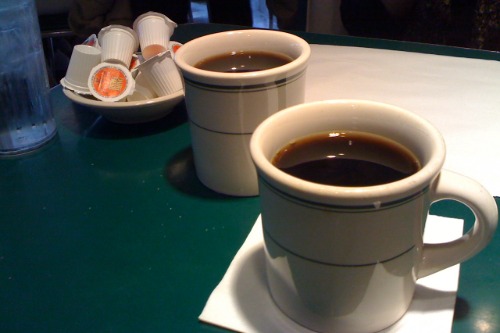
The plain, white ceramic coffee mug used in diners wasn’t designed to symbolize anything beyond serving hot beverages efficiently. Its shape, size, and durability were meant for practical, repeated use. But repeated exposure on television, in movies, and across diners nationwide turned it into a visual shorthand for Americana. Its unassuming nature made it a perfect cultural symbol.
Diner coffee mugs evoke small-town mornings, conversation over breakfast, and everyday American life. They are tied to both nostalgia and comfort, representing a slower, simpler time. Even today, reproductions are marketed to evoke that classic American experience. What was once purely functional became a tiny yet powerful icon of identity.
This post 14 Everyday Objects That Became Icons of American Identity by Accident was first published on American Charm.


